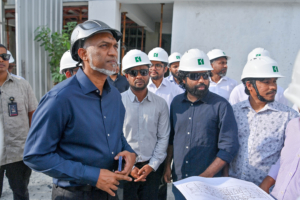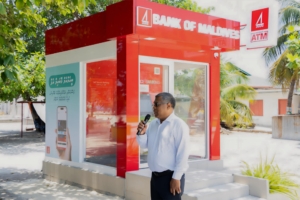Koagannu Cemetery, located in Addu City, the southern most atoll of the Maldives is among the most historically significant sites in the country, being the oldest ever.
The 900- year old cemetery, Koagannu located in the Northern edge of Meedhoo district of the city is the oldest cemetery in Maldives. The cemetery resembling a brief piece of history is an evidence of the architectural skills and talents of the ancient Meedhoo residents. The cemetery was built by Chief Justice Mohamed Shamsuddine and his three sons after they were exiled from Male’ to their native island Meedhoo during the reign of Uteem Sultan Shuja’i Mohamed Imaduddine I, circa 1660. Their only crime was failing to completely praise the Uteem Sultan during his friday sermon.
Meedhoo, probably over 3000 years old, is the oldest populated ward in Addu Atoll. Its origin and name emerge from the mists of original Indo-Aryan settlers (The meaning of Meedhoo in Sanskrit is Big Island). Centuries after the original settlers came and settled at the northern most tip of the atoll, an Arab Traveler by the name of Yoosuf Naib, planted the seed of Islam and built a place to worship Allah in 12th Century, in this island where the first mosque was built in the country to worship the Almighty, has ever since known as a centre of learning and religious education.

Having the first ever mosque, Fandiyaaru Miskiy within its parameters, Koagannu is an resemblance of the religion of Maldives, Islam as well. The mosque was built in the 12th Century CE, within the boundary of the cemetery by the Chief Justice Mohamed Shamsuddine and his children during their banishment and it has famously been known as a center for Islamic studies since then. The mosque was built entirely by hand and is one of the oldest existing mosques in Maldives. While many Maldivians are only aware of the Medhu Ziyaaraiy in Malé, the country’s second Medhu Ziyaaraiy is located within the premises of the Koagannu cemetery in Meedhoo.

One of the main reasons why Koagannu is such a protected and important landmark is because it showcases the impeccable craftsmanship of Meedhoo residents back then which decorates the enormous graves in Koagannu today. The cemetery is also home to the largest tombstone in the country. It is believed that this tombstone dates back to the 18th century and belongs to one of the royals of the Maldives. The graves depict Arabian art as well as special wordings displaying the skillful art of ancient Meedhoo natives. Back then, they practiced the ancient art of coral carving with the archaic Dhives Akuru script.

Koagannu was originally built with the purpose of burying the first Muslims from Addu City. The cemetery has time-honoured memories of royals of the Maldives that have been buried hundreds of years ago. In addition to this, the tombs showcase Arabic writings in the memory of those who had been buried hundreds of years ago.

The cemetery has always been a famous tourist location. However after being neglected for many years the historical monument is now in a state of peril. Recently Bank of Maldives helped develop the Raafalhaa beach of Hulhudhoo, which is the beach adjacent to the cemetery, making the area more inviting to tourists as well as locals.
A place where people visiting the historical ‘Koagannu’ area has been developed under this project. I want to highlight that this has been realized by the initiative and effort of the women of this island. It is a pleasure to have been a part of the development of a place where the residents and visitors of this island can enjoy.
Public Relations Manager of BML
The memory of the historical cemetery and its essence has slowly started to fade away from the memories of the young generation. This place is already is a devastating situation and lack of care im the future may result in the vanquishment of a valuable piece of history. Koagannu truly depicts a tale of time, from our ancestors to the current day this monument showcases the culture of Maldives, the craftsmanship and even the religion.
Sources:
- http://www.theislandlogic.com/2016/11/11/walking-among-the-dead-at-koagannu-cemetery/
- https://zamheena.wordpress.com/2012/09/24/koagannu-the-oldest-cemetery-in-maldives/





